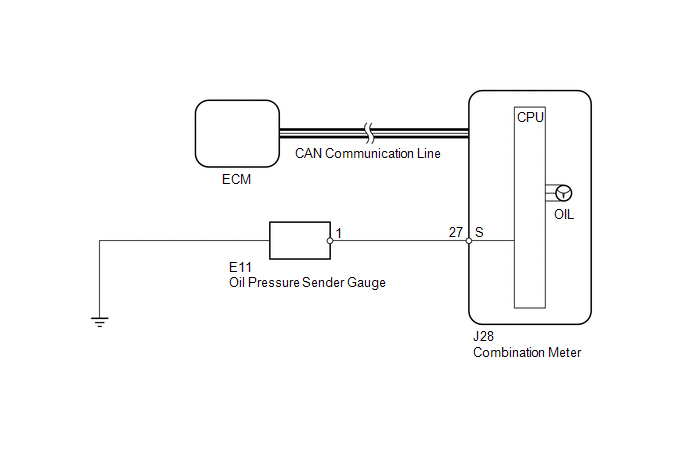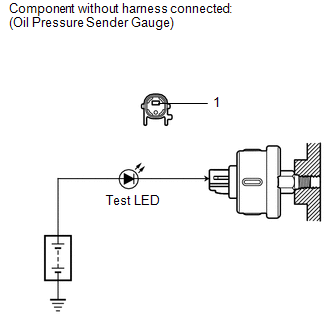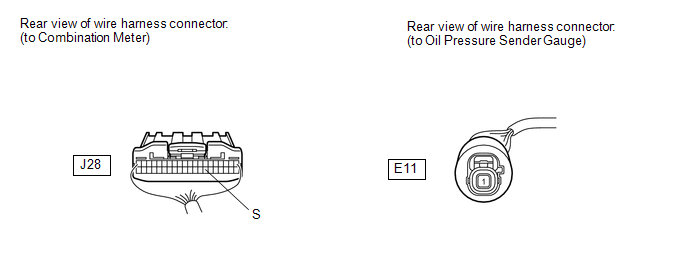DESCRIPTION The oil pressure sender detects the oil pressure generated when the engine is started. The combination meter determines that the engine is running when the engine speed is 400 rpm or more, and determines that the engine is cranking when the engine speed is 200 rpm or less. The oil pressure receiver gauge detects and indicates the oil pressure applied to the oil pressure sender. WIRING DIAGRAM 
PROCEDURE
(a) Check if a CAN communication system DTC is output (See page
(a) Operate the Techstream according to the display and select "Active Test"
(See page
OK: Needle indication is normal.
(a) Disconnect the E11 sender gauge connector. 
(b) Apply battery positive (+) voltage to the sender gauge terminal through a test LED. (c) Check that the LED does not illuminate when the engine is stopped. (d) Check that the LED flashes when the engine is running. The number of flashes varies with engine speed. OK: LED flashes when engine is running. LED does not illuminate when engine is stopped. Result

(a) Disconnect the J28 meter connector. (b) Disconnect the E11 gauge connector. (c) Measure the resistance according to the value(s) in the table below. Standard Resistance:
|
Toyota Tundra Service Manual > Sfi System: Fuel Injector Circuit
DESCRIPTION The fuel injectors are located on the intake manifold. They inject fuel into the cylinders based on the signals from the ECM. WIRING DIAGRAM PROCEDURE 1. INSPECT FUEL INJECTOR ASSEMBLY (POWER SOURCE) (a) Disconnect the fuel injector assembly connector. (b) Turn the ignition switch to ON. ...